 Weird Stuff
Weird Stuff  Weird Stuff
Weird Stuff  Movies and TV
Movies and TV Top 10 Ghost Adventures Episodes That Will Haunt You Forever
 Animals
Animals Ten Animals That Produce and Store Toxins in Unlikely Places
 Weird Stuff
Weird Stuff 10 Weird Things That Warp Your Sense of Time
 Miscellaneous
Miscellaneous Ten More Extremely Unexpected U.S. State “Firsts”
 Humans
Humans 10 Ideas That Scare People to Death
 Music
Music The Cursed Decade: 10 Classic Rock Stars Who Had Low Periods in the 1980s
 Health
Health 10 Crazy Ways Sleep Deprivation Can Affect You
 History
History 10 Enthralling Facts about the Field of Cloth of Gold
 Pop Culture
Pop Culture The Ten Greatest Engineers in Science Fiction History
 Weird Stuff
Weird Stuff 10 Surprising Things That Were Designed to Stop Evil Behavior
 Movies and TV
Movies and TV Top 10 Ghost Adventures Episodes That Will Haunt You Forever
 Animals
Animals Ten Animals That Produce and Store Toxins in Unlikely Places
Who's Behind Listverse?

Jamie Frater
Head Editor
Jamie founded Listverse due to an insatiable desire to share fascinating, obscure, and bizarre facts. He has been a guest speaker on numerous national radio and television stations and is a five time published author.
More About Us Weird Stuff
Weird Stuff 10 Weird Things That Warp Your Sense of Time
 Miscellaneous
Miscellaneous Ten More Extremely Unexpected U.S. State “Firsts”
 Humans
Humans 10 Ideas That Scare People to Death
 Music
Music The Cursed Decade: 10 Classic Rock Stars Who Had Low Periods in the 1980s
 Health
Health 10 Crazy Ways Sleep Deprivation Can Affect You
 History
History 10 Enthralling Facts about the Field of Cloth of Gold
 Pop Culture
Pop Culture The Ten Greatest Engineers in Science Fiction History
10 Myths And Mysteries From The Cult Of Mithras
More than 200 temples dedicated to the worship of Mithras have been found from Britain to Syria, along the Rhine and into Italy. They’re buried under Christian churches and nestled away in natural caves, with imagery that remains constant across a huge territory and has been preserved for thousands of years. The rise of Christianity snuffed out the cult of Mithras, and what remains are some tantalizing clues to what lay at the heart of this secret cult.
10 Cult Origins
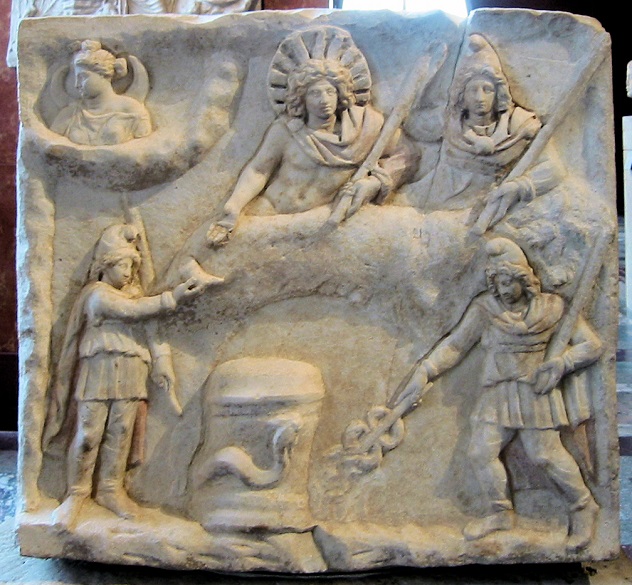
Today, we think of the worship of Mithras as “Mithraism,” but that’s a fairly recent title. Older references to the religion call it either the Mysteries of Mithras or even the Mysteries of the Persians, making the connection between the god and his Persian origins clear. The cult had a major stronghold in the Roman empire, and those Roman subjects who practiced it considered themselves Persian in a cultural respect. Those ancient Romans traced their cult’s lineage back to Zoroaster, but where the cult started is much less clear.
For about the 200 years leading up to 2800 BC, Mithras (who’s also known as Mitra, Meher, Meitros, Mihr, and Mehr) is mentioned in the occasional text with little real information or context. It’s thought that 2800 BC is something of a major turning point in Mithras’s career as cult god, but no one’s really sure what sparked his rather meteoric rise in popularity. After that year, there’s a major spread of references reaching out eastward into China and west through Europe and then across the entire Roman empire. By the time that empire was at its height, there were hundreds of temple to Mithras scattered across their territory, and even as the popularity of Mithras faded, the caves used in his worship remained holy sites. One of the largest temples ever found in Italy has religious ties today: The Church of St. Clemente was built above it.
The original Persian Mithras was a far cry from the one frequently depicted in European murals. Known as The Mediator, he occupied a position between Ahura-Mazda, the light, and Ahriman, the dark. By the time he was adopted by the Armenians, he became associated with the caves that would be integral to his later worship. According to their tradition, he confined himself to a cave and emerged only once a year in a symbolic rebirth. When he made it to China with the expansion of the Persian empire, he was The Friend, but for some reason Greece was virtually untouched by the cult of Mithras.
9 The Spread Of Mithras Into Rome
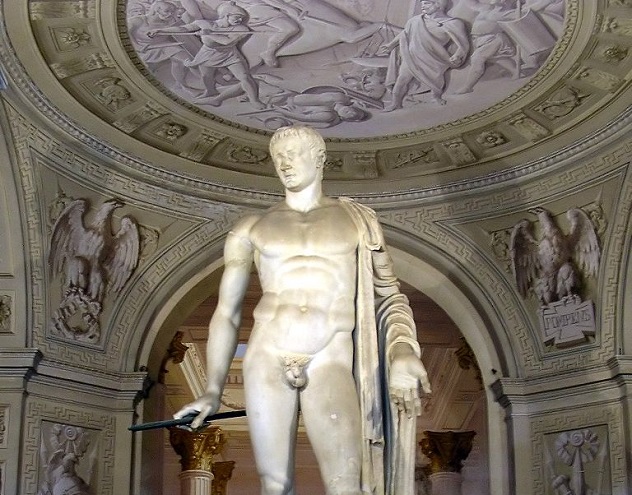
While it seems the cult usually spread with the expanding Persian and later Roman cultures, the introduction of Mithras to Italy came in a weird way. According to Plutarch, it was the Cilician pirates who first brought the rites to Italy when they embarked on raids against Roman ships in the first century BC. It wasn’t until the rule of Pompey (above) that Rome really put the boot to the pirates, with the surviving members of their parties transported to Italy after their defeat. (But we aren’t sure if that story is true, as Plutarch’s purported timeline has the introduction of Mithras at the same time that archaeological finds suggest the cult had already taken root there.)
Even if the Cilician pirates did bring their religion with them into Rome, it’s not as clear-cut as that. One of the foremost scholars of Mithras, Franz Cumont, put forward the idea that the Roman Mithras was the same as Ahura-Mazda. But some major differences—like the Persian god dealing mostly with contract, law, and negotiations and the Roman god being a sun god—suggest that the Roman version is less like a grandson and more like a second nephew twice removed, then probably adopted. Pieces of the Persian religion still show up in Rome, but they don’t give the whole picture.
So what’s the deal? No one’s really sure. Some—like religious scholar Luther Martin and researcher Roger Beck—suspect the problem came in attitudes. At the same time the Romans thought they were on the top of the world, there was also an idea that Eastern cultures possessed an ancient knowledge. Adopting Mithras in name and in a few respects then making him their own might have been done in an attempt to preserve their “Roman-ness” while still tapping into ancient knowledge.
8 The Mithraic Grades
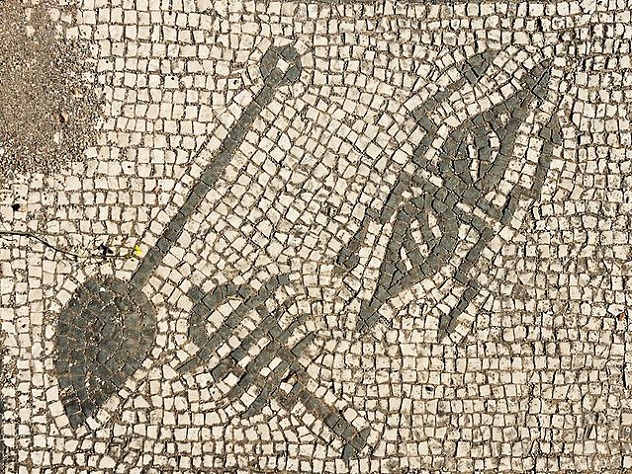
Initiates into the cult of Mithras had the potential to rise through a series of different grades. We know that there were seven different levels, and most of what we’ve managed to uncover about them has only come to light in the past century. But we still don’t know a lot, including what an initiate might have actually been called.
Uncovering their roles took some work. Some of our primary sources are temple mosaics, like the one on the floor of the Mithraeum of Felicissimus in Ostia, and graffiti that was left on other temple walls. Comparing images has helped put together something of a list.
The Raven, or Corax, was associated with the cup, the staff of Mercury, and the planet Mercury. The Bridegroom, or Nymphus, seems to be associated with the oil lamp, a diadem, and a third symbol that no one’s been able to decode yet. It has some kind of connection with the planet Venus, and it’s one of the most debated in part because it refers to a creature that doesn’t actually exist—a male bride—and virtually nothing about the role they served has been uncovered. The third grade is the Soldier, or Miles, and it’s been associated with the helmet and lance, along with the planet Mars.
The Fourth is the Lion, Leo, symbolized by thunderbolts, rattles, and fire-shovel in mosaic depictions (above). Somehow connected with the planet Jupiter, we have a few texts that talk about the lions as moral guardians and how they were purified by honey.
The Persian, or Perses, is another we know nothing about aside from its symbolic associations: the Moon, the Persian dagger, the moon sickle, the plow, and the star.
The Runner of the Sun is also called Heliodromus, and they were under the protection of the Sun. It’s suggested that there was some connection to a bird that was said to follow the path of the Sun in the sky, and these were associated with the whip, the torch, and a crown with seven rays. Because of their connection to the Sun, it’s thought they were responsible for some sort of yearly ceremony relating to the Sun’s path.
The final grade is the Father, or Pater, who oversaw the rest of the community. They shared some symbols with Mithras himself, like the Phrygian cap, the staff, the dagger, and the sacrificial bowl, and were likely responsible for guiding others through the process.
There are more questions than answers about the seven grades. Were they arranged in a hierarchy, or were the roles independent from each other? Were they universal throughout the wide spread of the cult? We’re not really sure.
7 The Elephant’s Tomb
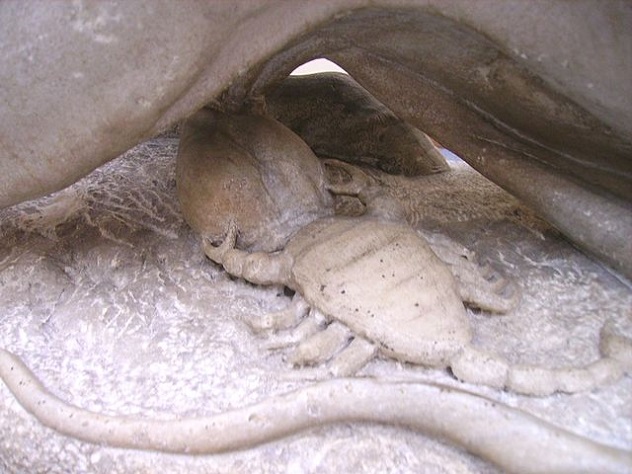
The Elephant’s Tomb is the modern name given to an ancient structure in a Roman necropolis in Seville, Spain, and the name came from a statue that was discovered in one of the interior rooms. More excavations done in the rooms suggest it wasn’t always a burial ground; it originally may have been a temple to Mithras.
Archaeological evidence shows that the structure as it stands now went through four distinct phases. A window was part of the first stage, and researchers from the University of Pablo de Olavide in Seville found that it had a symbolic purpose.
During the spring and autumn equinoxes, the light streaming into the central chamber would have shown directly on the center of the room. During the two solstices, the light would have lit the north and south walls. It’s also aligned with two of the constellations that were most important to the Mithraic order: Scorpio and Taurus. The image of Mithras killing a bull is the most commonly seen cult image, and it also shows the scorpion stinging the bull (above) as Mithras kills it.
They now believe that a statue of Mithras in his famous bull-slaying pose would have sat in the center of the room to be illuminated by the Sun’s rays on astronomically important days.
The first life of the tomb was hidden during three subsequent renovations, but there are, of course, still objections to the idea. Whether the three-chambered room was used for the mysterious rites and rituals of Mithras has yet to be proven, but it also raises the question of how many more temples and caves are out there that we have yet to find.
6 The Preparation
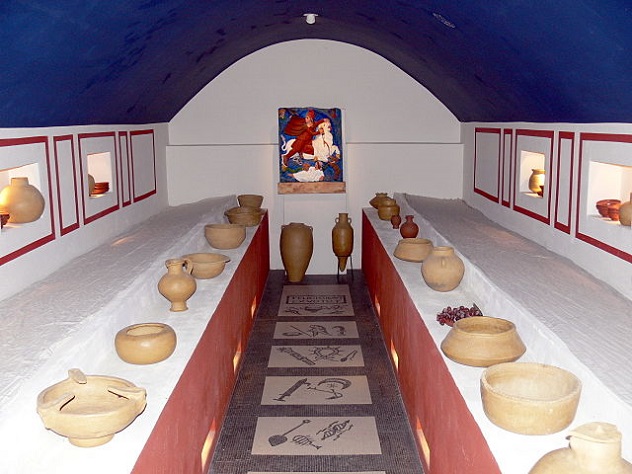
The idea of the cult of Mithras as a mystery religion means that anyone who was participating in it needed to be initiated into the ceremonies. We have no idea how the faithful prepared for their initiation, though, and even studies of Mithraic temples have yielded almost no information about what was required of the devotees before they were accepted into the cult.
Examinations of the temple under what’s now a church in Rome sparked the suggestion that a brick platform and a series of niches served as a sort of lecture hall where future initiates would be told all they needed to know about the mysteries they were swearing themselves to—but others say it was probably just a meeting room of some sort.
We can surmise at least some things about the process of getting into the cult, most of which is based on what we know about most exclusive societies today. There was likely a period where a novice performed some sort of service, took a test, and was imparted with some of the knowledge that would go along with being a member. The layers and layers of secrecy meant it was possible that potential members knew nothing about what they were walking into, even the most basic ideas—ideas that we’ve since lost.
Some of the literary sources we have on the events that led to someone’s acceptance into the cult is undoubtedly exaggerated, but it shows what contemporary writers thought was happening. One sixth-century text described 80 tests ranging from being exposed to the flames of a bonfire to spending time living as a hermit. Another text from the eighth century claimed that initiates were required to fast for 50 days, were “abraded” for two days, and left out in the snow for the next 20 days.
5 The Constellations

The image of Mithras killing the bull—the tauroctony—is the most widely found image associated with the religion. It’s always oddly specific, too, with Mithras in the same position, with the same elements of the bull itself and the scorpion, and in reliefs, he’s always accompanied by two other figures called Cautes and Cautopates. A lion and a bowl are sometimes featured as well, and most of the intact reliefs are framed by an arch. For all the examples of the image we’ve found, no one has ever found a single text from anywhere near the era of Mithras telling how the image was supposed to be interpreted or why it’s so specific.
According to the writings of the Roman philosopher Porphyry, Mithras was symbolic of the figure of Mars and was tied to the constellation of Aries. The bull was, of course, Taurus, and associated with the planet Venus. The scorpion, the lion and the twins are constellations as well, and it’s now thought that the imagery of the cult was depicting exactly what they were seeing in the night sky. Scorpio is always stinging the bull, who’s always standing with a bent foreleg featured in the constellation. The snake is in the same position as Hydra, and even the occasional inclusion of the lion can be explained by the idea that only constellations that overlapped the equatorial line were important enough to be included in the imagery. Sometimes, Leo was on the line, and sometimes it wasn’t, depending on the perspective of the viewer.
This seems logical enough, but we’re still not sure exactly who Mithras was. Orion might seem the first choice, but the positioning is wrong. If the image is a map of the night sky, Mithras should be beneath the bull, not above it—and, the traditional weapon is wrong. There’s another figure in the night sky who’s also dressed in a Phrygian cap and who’s in the right position to be Mithras: Perseus. If Perseus was the inspiration for Mithras, it also explains one of the strangest elements of the Mithras relief. As he delivers the killing blow, Mithras is looking away from the bull, which matches how Perseus is positioned in the night sky.
4 Cautes And Cautopates
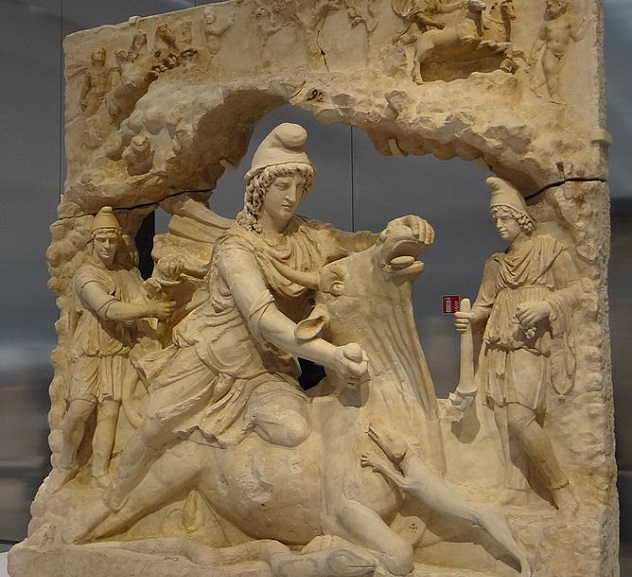
In that famous image, Mithras is never alone. Standing on either side of him are the twins—Gemini—named Cautes and Cautopates. Some inscriptions on the reliefs mention them by name, so we know what those names are and which is which: Cautes holds his torch upright, while Cautopates holds his upside down. In some examples, Cautes is shown holding the head of a bull and Cautopates is given a scorpion, further cementing the idea that they’re related to the constellations by linking the imagery to the entrance of the Sun into the zodiac during the spring and fall equinoxes.
What we don’t know is there they came from, what their names mean, or where the names originated. There’s no mention of them in the original Persian and Zoroastrian mythology, and even though their names sound like they should be Iranian, they aren’t. Tracing the origins of the names means a lot of wading through waist-deep linguistic mud, but by the time you get through ancient Greek, Turkish, and Iranian, the closest thing you can possibly find as the basis for the names are words that we translate as “Heap” and “Collapse of a Heap.”
So that’s unlikely.
We’re not sure what they’re supposed to represent, either. One interpretation is that Cautes represents the dawn, Mithras (always between the two) is the midday sun, and Cautopates is the sunset. It’s also been suggested that Cautes is birth, Mithras is life, and Cautopates is death.
It’s made even more complicated that sometimes both figures are holding their torches upright. No one knows if they’re both supposed to be Cautes or if there’s some sort of other meaning to these images that we’ve likely lost forever.
3 The Lion-Headed Statues

While the cult obviously centers on the figure of Mithras, there’s another figure that’s central to the cult ideas—and no one knows who he is. The figures have been found in the form of idols and as statues, and while there are some differences in their presentation, they’re basically the same. The figure has the head of a lion, wings draped across the back and sometimes folded around the front, with a snake wrapped around it from ankles to chest. The figure sometimes holds a sword, a staff, a key, or a torch, and sometimes the now-familiar figures of the zodiac are included. The mouth of the lion is always open, and some figures have a hole carved inside the mouth.
No one’s sure who it’s supposed to be or what it represents. Some think it’s the Zoroastrian god of time, called Zurvan. Zurvan was an eternal figure who stood in direct opposition to Ahriman, the Evil Spirit.
Others think it’s supposed to be the Evil Spirit himself. Some inscriptions refer to the burning of incense inside the statue to create the image of a fire-breathing beast, and the image of the lion itself seems to suggest a demonic nature, at least according to the Zoroastrian traditions. And snakes have a long history of being depicted as evil, but the answer might also lie in the writings of another mystery cult. The Yazidi mystery cult of Iraq and Armenia uses snakes as their Destructive-Creators, and a manuscript from the Iranian province of Luristan tells the story of an evil creature whose name translates to “Lionish-God.”
The lion-headed figure is thought to represent everything beyond the zodiac that features so heavily in Mithraic teachings. He might be a gatekeeper, he might be an evil creature holding the keys to knowledge or heaven, or he might have something to do with the binding and releasing of souls.
2 The Initiation
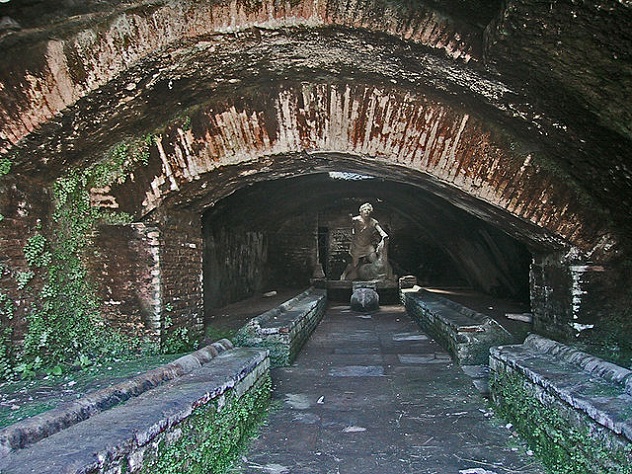
While we’re not entirely sure what an initiation ceremony into the cult looked like, we have some tantalizing clues.
A manuscript from Florence tells us that the ceremony was performed by two men called the Father and the Herald. The initiate would recite an oath promising his secrecy and at the end he would have his hands branded or tattooed (although some portraits show the tattoos on a person’s forehead).
There were then a series of trials, which we know about from murals on the walls of a grotto in Capua. One image shows a naked and blindfolded initiate being guided by a white-robed figure. The next shows the same blindfolded initiate kneeling while someone approaches him from behind, armed with what looks like either a sword or a stick. The third shows the initiate on one knee, a sword on the ground next to him, with one of the men standing behind him with his hands on his head.
Other images show other parts of the ceremony and depict the initiate lying on the ground, being pushed over by one man while another walks toward them, and kneeling while holding his hands under his chin.
A fourth-century text says the sword is used to cut the chicken-gut bindings that ties the initiate’s hands. By this time, the records get increasingly fantastic with claims that initiates went through greater and greater challenges like spending days submerged in water and more.
Just where truth and fiction meet, we’re not sure.
1 Paul And The Link With Christianity
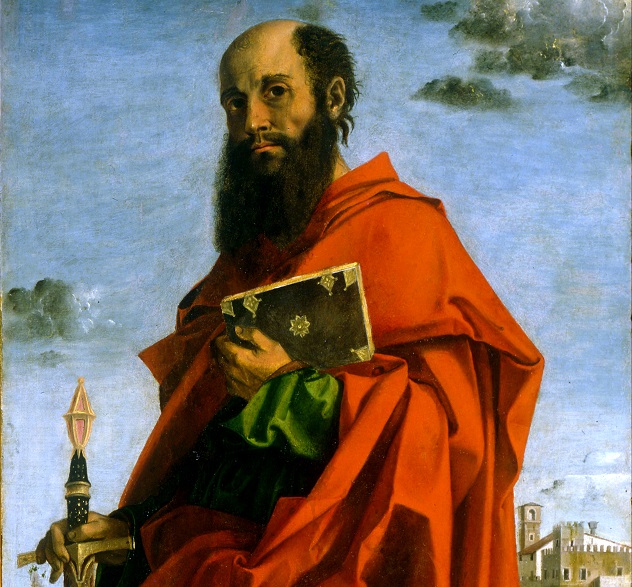
There are a lot of similarities between the cult of Mithras and Christianity, including the idea of a virgin birth and 12 followers, a December 25 birthday, and his position as the savior of man. The number of Christianity’s core beliefs and practices that have been taken from Mithraism is hotly debated, and one of the biggest questions is whether or not St. Paul had anything to do with the connection.
There’s an entire school of thought saying it wasn’t Christ who founded Christianity, but Paul. Different authors go about it in different ways. Some suggest that Paul was a highly literate adventurer who jumped at the chance to found a new religion when he saw Christ had no such inclinations, while others say Paul simply built on Christ’s teachings and filled in the blanks with parts of other world mythologies he was already familiar with. Regardless, the basic idea is that it was Paul who created the religion we all know today. And when it came to where he pulled his knowledge from, even Friedrich Nietzsche pointed the finger at the cults of Osiris and Mithras.
Paul was from Tarsus, which was a major center of Mithraic activity during his time. According to the theory, his writing is full of references to Mithras, like his comments in Ephesians 6:10-17 where he talks about putting on the armor of God and picking up the sword of the spirit. It’s an odd image in respect to what should be the following of a man who preached nonviolence, but it’s in line with the warrior cult of Mithras. Some suggest Paul was a priest of Mithras, while others take a huge leap to suggest he was the same person as Simon Magus. Evidence for that is extremely sketchy, but it has a little mainstream backing.
The Martin Luther King, Jr., Research and Education Institute at Stanford has a copy of a paper that King wrote, bringing up the idea that Paul’s familiarity with the cult had an impact on Christianity. He writes specifically about the early idea that Christ was born in a cave, and Paul’s comments, “They drank of that spiritual rock . . . and that rock was Christ.” That was lifted straight from Mithraic inscriptions, and so was the idea that Sunday was the Lord’s Day—originally, it was Mithras’s day. One of the likely sources for the inclusion of ideas that would have been familiar to mystery cult adherents was Paul, but it’s likely we’ll never really know how much influence he had in shaping mystery religions into Christianity.








